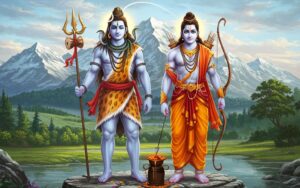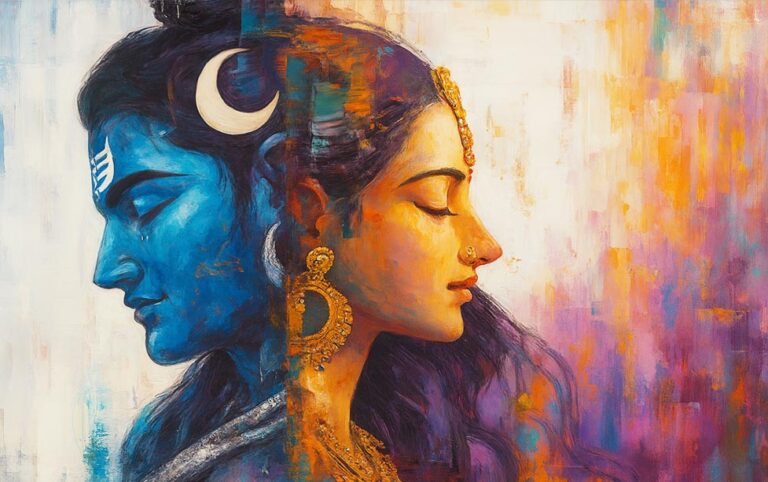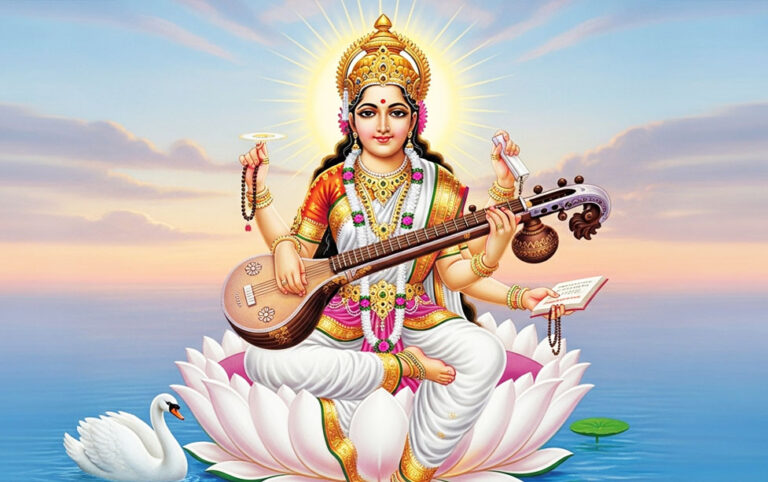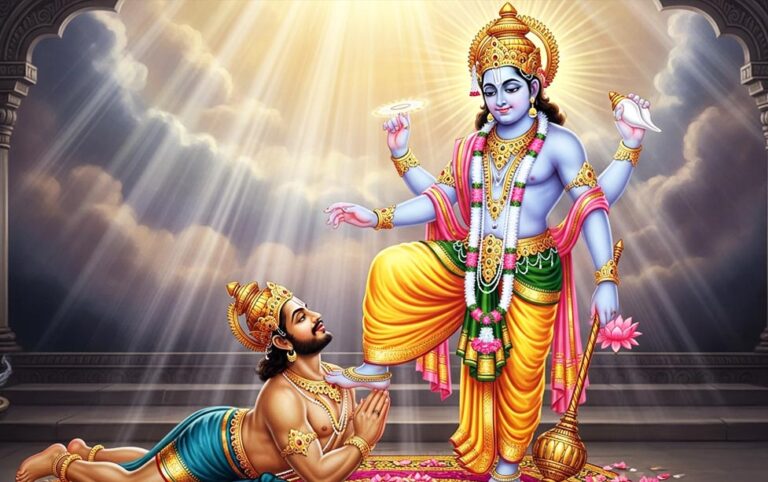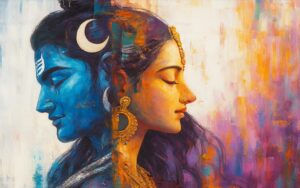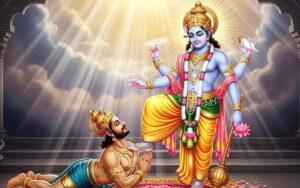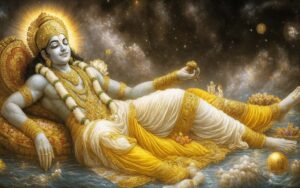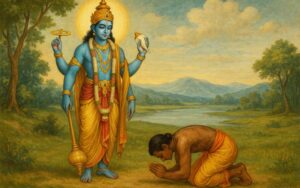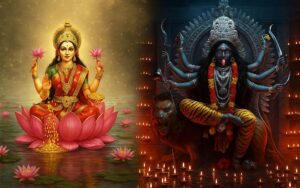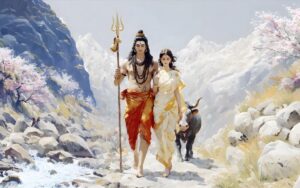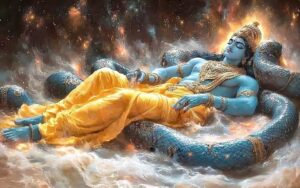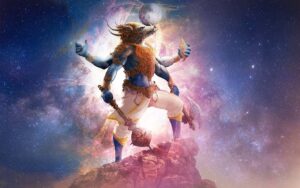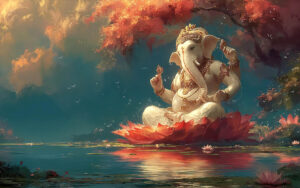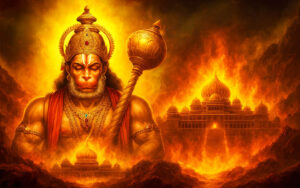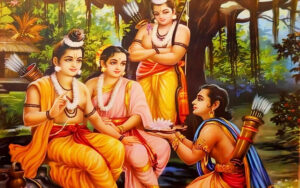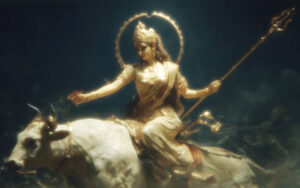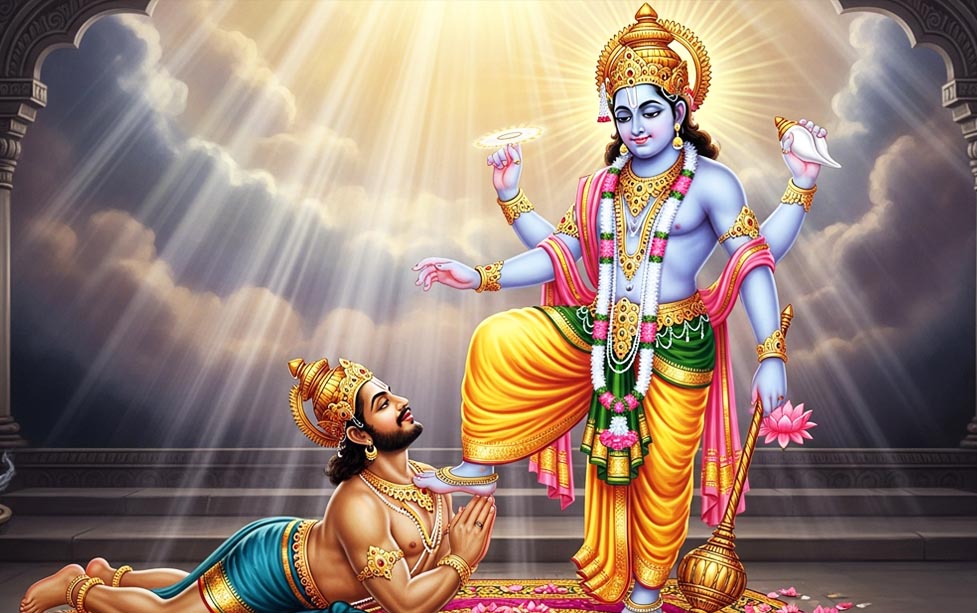
No time for reading the story? Give it a listen on Spotify.

This story from the Skanda Purana tells of the righteous demon Gayasura, whose selfless devotion transformed him into the sacred land of Gaya Kshetra — a gateway to liberation for all.
Characters in the story:
Lord Vishnu: Lord Vishnu is one of the three major deities in Hinduism, known as the preserver of the universe and the protector of dharma (righteousness). He is often depicted with four arms holding a conch shell, a discus, a mace, and a lotus flower.
![]()
Gaya: Gayasura (Gaya) was a powerful demon whose body was transformed into a sacred site after he was subdued by Vishnu. He became a renowned, pious figure who performed severe penances to earn a boon from Vishnu, which granted his body immense sacredness.
In the heart of ancient Hindu legends, recorded in the Skanda Purana, lies the extraordinary tale of Gayasura (Gaya). The demon who became a symbol of purity and liberation.
Unlike most asuras, Gaya was not driven by greed or power. He was a pious soul, devoted to truth, compassion, and self-discipline. Through severe penance and meditation, he pleased Lord Vishnu, who appeared before him and asked what he desired.
Gaya humbly said,
“May my body and my name become sacred, so that anyone who even remembers me may be freed from sin and attain moksha.”
Lord Vishnu granted his wish. From that moment, the very sight or touch of Gaya could purify even the most sinful beings.
Trouble in the Three Worlds
As ages passed, the gods grew concerned. People stopped performing rituals, believing that remembering Gaya alone was enough for salvation. Without offerings, the gods’ power began to fade. In distress, they approached Vishnu and Brahma.
Lord Vishnu said, “The boon cannot be taken back, but balance must be restored.” Together with Brahma and Shiva, he went to Gaya.
The Divine Deception
The gods asked Gaya for a favor:
“O noble one, your body is so pure that no other place can match its sanctity. Allow us to perform a Yajna (sacred sacrifice) upon you, using your chest as the altar.”
Gaya agreed without hesitation. His humility shining even brighter than his power. As he lay down, Vishnu placed his foot gently on Gaya’s chest to keep him still while the Yajna was performed.
At that moment, the earth beneath him transformed into a holy land. The ritual lasted for seven days and nights. When it ended, Vishnu blessed him once again:
“From this day, your body shall become Gaya Kshetra, the most sacred ground on earth. Here, those who perform Pind Daan and Shraddha for their ancestors will help them attain liberation.”
Gaya, content and at peace, merged into the earth — becoming one with the land that now bears his name.
The Sacred Geography of Gaya
The Skanda Purana describes three divine spots within Gaya Kshetra:
Vishnupad Temple: Where Lord Vishnu’s footprint still rests on a black basalt rock, believed to be the exact spot where he subdued Gaya.
Phalgu River: The river where devotees perform Pind Daan, offering rice balls and prayers to the souls of ancestors.
Pretshila Hill: The “Hill of Spirits,” where Lord Yama is said to judge souls, and where ritual offerings hold special power.
The Purana also mentions that even the Devas perform rites here, for this land is said to be blessed by Vishnu, Shiva, and Brahma together — a rare unity of divine forces.
Symbolism and Legacy
Spiritually, the story represents how selfless surrender transforms ego (asura nature) into sacredness. Gaya’s willingness to let his body become a sacred site teaches that purity comes not from birth but from devotion and sacrifice.
Today, Gaya in Bihar remains one of the most important Hindu pilgrimage sites, attracting thousands each year for Pind Daan — believed to release ancestors from the cycle of rebirth. Pilgrims recite verses from the Skanda Purana and bathe in the Phalgu River, continuing a tradition said to be over 5,000 years old.
Eternal Blessing
In the closing verses of the Gaya Mahatmya (a section of the Skanda Purana), Vishnu declares:
“Whoever offers food and water to their ancestors at Gaya will bless ten generations before and after them. This land shall remain forever pure, untouched by sin or time.”
And thus, the legend of Gaya stands as a timeless reminder that divinity can dwell even in humility, and that true liberation comes through service and surrender.


